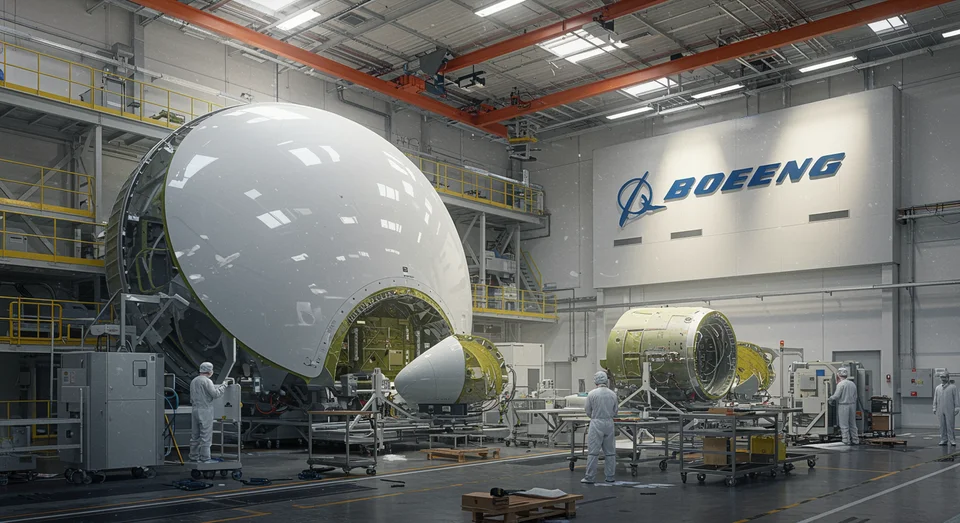Aerospace Radome Market to Hit $6.18 Billion by 2030 Amid Material Science Breakthroughs
255 views
The Aerospace Radome Market, poised for significant growth from $3.96 billion in 2024 to an anticipated $6.18 billion by 2030, is undergoing a transformative evolution driven by cutting-edge advancements in material science, composite engineering, and sensor integration. With a projected compound annual growth rate (CAGR) of 7.71%, the industry is not merely expanding in size but redefining its technological frontiers. At the heart of this progress lies the pursuit of durability, aerodynamic efficiency, and cost-effective maintenance solutions, as radome designs adapt to meet the rigorous demands of modern aerospace platforms.

Innovations Shaping the Future of Aerospace Radomes
Radomes, integral to aerospace systems, function as protective enclosures for radar and communication equipment, shielding them from environmental factors while ensuring seamless signal transmission. Their role has become increasingly critical in defense, commercial aviation, and space exploration, prompting industry leaders to explore groundbreaking innovations in materials and manufacturing techniques.
Advances in material science have spurred the development of composite materials that boast superior strength-to-weight ratios, thermal resistance, and impact durability. These innovations not only enhance the lifespan of radomes but also improve their aerodynamic performance—a crucial factor for high-speed aircraft and unmanned aerial vehicles (UAVs). The integration of sensors within radome designs has further elevated their functionality, enabling real-time monitoring and diagnostics to optimize performance and reduce operational downtime. Such technological breakthroughs are reshaping the industry, allowing radomes to become smarter, more resilient, and increasingly tailored to specific aerospace applications.
Manufacturers are also leveraging additive manufacturing, or 3D printing, to achieve precision and efficiency in radome production. This approach minimizes material wastage while enabling intricate designs that were previously unattainable through traditional methods. The reduction in manufacturing costs and lead times has made radome solutions more accessible, particularly for emerging markets and budget-conscious defense programs.
Regional Dynamics and Industry Leadership
The growth trajectory of the Aerospace Radome Market is deeply intertwined with regional dynamics. The Americas remain at the forefront, with the United States leading innovation and production efforts. The region’s robust defense spending and focus on technological superiority have fostered partnerships between government agencies and industry giants such as Boeing, Raytheon Technologies Corporation, and BAE Systems plc. These collaborations have been instrumental in developing advanced radome solutions for next-generation fighter jets, surveillance systems, and space exploration missions.
Europe and the Middle East, on the other hand, are experiencing a surge in demand due to defense modernization initiatives. With geopolitical tensions and shifting security priorities, nations in these regions are increasingly investing in state-of-the-art aerospace systems, driving the need for specialized radome designs. Companies like Airbus Group SE and Thales Group are capitalizing on this trend, offering innovative solutions that align with the stringent requirements of defense and commercial aviation sectors.
Meanwhile, Asia-Pacific is emerging as a key player in both production and innovation. Countries such as China, India, and South Korea are ramping up their aerospace capabilities, supported by government incentives and a growing pool of skilled engineers. The region’s competitive manufacturing landscape and focus on cost efficiency are attracting global attention, making it a hub for radome production and technological experimentation.
Strategic Pathways for Industry Growth
As the Aerospace Radome Market evolves, industry leaders are urged to adopt strategies that address the complexities of a rapidly changing landscape. Investment in research and development remains paramount, as technological advancements in composite engineering and sensor integration continue to redefine radome capabilities. Strengthening supply chain resilience is equally critical, particularly in the wake of disruptions caused by global events such as the COVID-19 pandemic and geopolitical conflicts.
Exploring emerging markets offers a promising avenue for growth, especially in regions where defense and aerospace budgets are on the rise. Companies are encouraged to adopt customer-centric approaches, tailoring radome solutions to meet the unique needs of diverse end-users, from UAV operators to commercial aviation fleets. The segmentation of the market by offering, type, payload type, aerospace platform type, application, and end-user underscores the growing demand for specialized radome designs that cater to specific operational requirements.
Furthermore, the adoption of smart manufacturing techniques, including automation and artificial intelligence, can streamline production processes and enhance quality control. By embracing these innovations, manufacturers can maintain a competitive edge while addressing the increasing complexity of aerospace systems.
A Broader Perspective on Aerospace Evolution
The Aerospace Radome Market’s trajectory reflects broader trends within the aerospace industry, where innovation is driven by the convergence of technology, sustainability, and geopolitical imperatives. As radomes become more advanced, they play a pivotal role in enabling integrated communication and surveillance systems that are vital for modern aerospace operations. Their evolution mirrors the industry’s shift toward smarter, more efficient, and environmentally conscious solutions.
Looking ahead, the market’s growth is likely to be shaped by emerging technologies such as quantum computing, advanced sensors, and artificial intelligence, which promise to further enhance radome designs. The integration of these technologies into aerospace platforms will not only improve performance but also redefine the boundaries of what is possible in defense, commercial aviation, and space exploration.
As industry leaders navigate this dynamic landscape, their ability to innovate, adapt, and collaborate will determine their success in shaping the future of aerospace radomes. With a strong foundation in research, manufacturing excellence, and strategic foresight, the market is poised to achieve remarkable milestones in the years to come, setting new benchmarks for technological advancement and operational efficiency.
